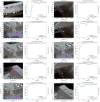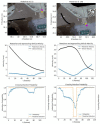Pedestrian Crossing Intention Forecasting at Unsignalized Intersections Using Naturalistic Trajectories
- PMID: 36904976
- PMCID: PMC10006956
- DOI: 10.3390/s23052773
Pedestrian Crossing Intention Forecasting at Unsignalized Intersections Using Naturalistic Trajectories
Abstract
Interacting with other roads users is a challenge for an autonomous vehicle, particularly in urban areas. Existing vehicle systems behave in a reactive manner, warning the driver or applying the brakes when the pedestrian is already in front of the vehicle. The ability to anticipate a pedestrian's crossing intention ahead of time will result in safer roads and smoother vehicle maneuvers. The problem of crossing intent forecasting at intersections is formulated in this paper as a classification task. A model that predicts pedestrian crossing behaviour at different locations around an urban intersection is proposed. The model not only provides a classification label (e.g., crossing, not-crossing), but a quantitative confidence level (i.e., probability). The training and evaluation are carried out using naturalistic trajectories provided by a publicly available dataset recorded from a drone. Results show that the model is able to predict crossing intention within a 3-s time window.
Keywords: behaviour; crossing; forecasting; infrastructure; intention estimation; pedestrian.
Conflict of interest statement
The authors declare no conflict of interest.
Figures








References
-
- World Health Organization Global status report on road safety. [(accessed on 20 May 2020)];Inj. Prev. 2015 Available online: http://www.who.int/violence_injury_prevention/road_safety_status/2015/en/
-
- Yilmaz A., Javed O., Shah M. Object tracking: A survey. ACM Comput. Surv. 2006;38:13. doi: 10.1145/1177352.1177355. - DOI
-
- Gawande U., Hajari K., Golhar Y. Recent Trends in Computational Intelligence. Elsevier; Amsterdam, The Netherlands: 2020. Pedestrian Detection and Tracking in Video Surveillance System: Issues, Comprehensive Review, and Challenges.
Grants and funding
LinkOut - more resources
Full Text Sources

